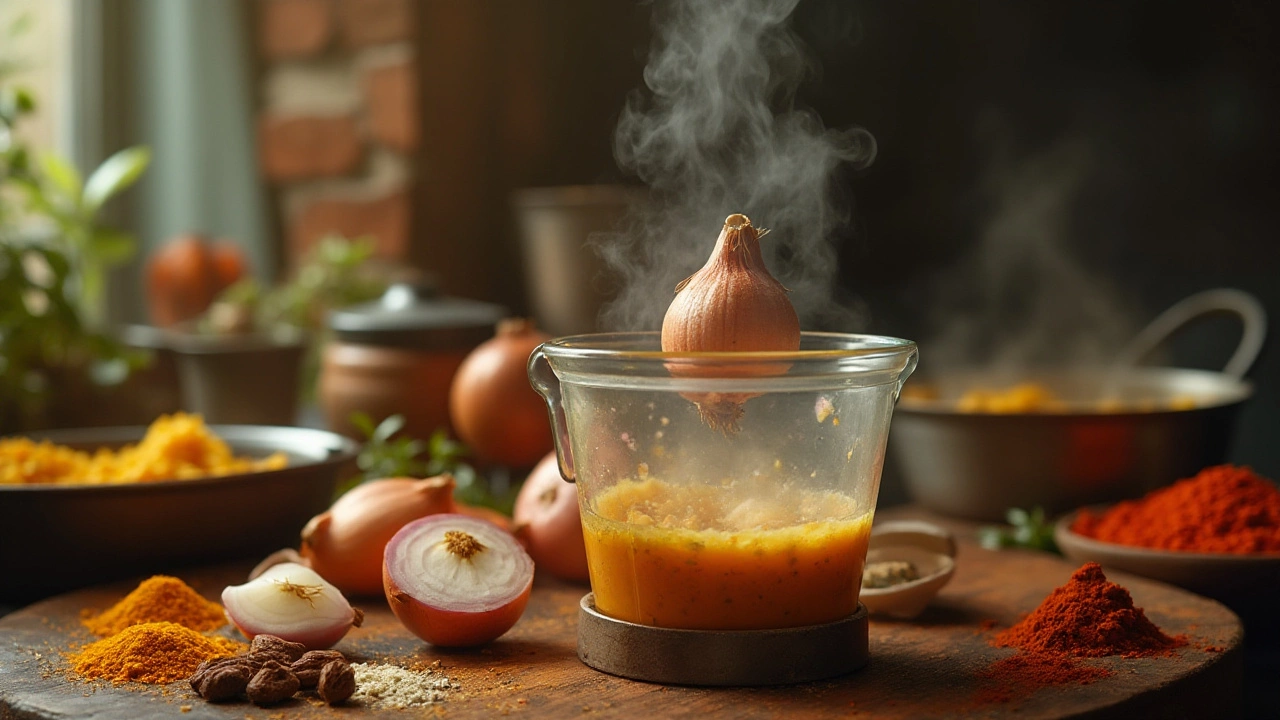Curry Cooking Tips: Master Flavor, Safety, and Technique
When working with Curry Cooking Tips, practical advice for preparing flavorful, safe, and authentic Indian curries. Also known as curry hacks, it helps home cooks master spice balance, temperature control, and ingredient prep. For instance, Chicken Curry a staple dish that blends protein with a spiced broth benefits from proper Marination the technique of soaking meat in an acidic or enzymatic mixture to tenderize and infuse flavor. Another key process is Fermentation a biochemical method that develops tangy flavor and improves texture in batters and doughs, which shows up in dosa batter served alongside many curries. These three entities form the backbone of any solid curry cooking guide.
Core Areas Covered by Curry Cooking Tips
First, spice balance is the heart of every curry. Knowing how heat, aroma, and depth interact lets you adjust chilies, pepper, and whole spices without guessing. The rule of thumb is to start with a base of turmeric, cumin, and coriander, then layer in heat (chili powder or fresh chilies) and finish with freshness (garam masala, fresh herbs). Second, temperature control matters whether you’re sautéing onions or simmering a gravy. Over‑high heat can scorch spices, while low heat might leave raw flavors. Third, safety rules around raw chicken are non‑negotiable. Adding raw chicken directly to a hot curry without reaching 165°F (74°C) can lead to food‑borne illness, so you’ll learn the right order of adding protein and the timing needed for a safe, juicy result. Finally, fermentation tricks for dosa or idli batter help you create light, crispy sides that complement thick gravies, boosting the overall meal experience.
Our collection of articles brings these concepts to life. You’ll find step‑by‑step guides on how to replace baking soda in dosa batter, why a flat batter happens and how to fix it, and quick fermentation hacks that let you enjoy crisp dosas on a weekday. There are also deep dives into chicken safety in curries, the science of marinating with sour cream versus yogurt, and the impact of raw‑protein handling on flavor. Each piece ties back to the central theme: using solid curry cooking tips to lift every home‑cooked curry from ordinary to restaurant‑quality.
Whether you’re a beginner looking for the easiest butter chicken recipe or an experienced chef tweaking the perfect spice ratio, the posts below cover the full spectrum. Expect practical checklists, common mistake warnings, and quick troubleshooting tricks that let you fix a bland gravy, a watery chutney, or a soggy dosa in minutes. The goal is to give you a toolbox you can reach for whenever a curry question pops up, so you can cook confidently and safely every time.
Ready to dive in? Below you’ll find a curated list of guides that walk through each tip in detail, offering real‑world examples, dosage tables, and the why‑behind each step. Use them as a reference whenever you need a quick answer or want to experiment with new flavors.
Should You Blend Onions for Perfect Chicken Curry?
Blending onions for curry can significantly influence the dish's texture and flavor. This technique is particularly crucial when preparing chicken curry, where the balance of ingredient consistency can make or break the experience. By examining various methods and their effects, this guide offers insights into whether blending onions suits your preferred chicken curry style. Discover tips and tricks to enhance the rich, aromatic quality of your curry dishes.
Read more